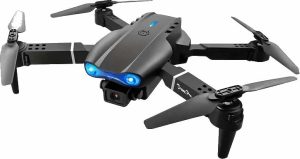
Hi there, beginning drone pilot! You’re excited, right? You’ve got a brand new drone you’d like to put into action and fly. Terrific. But before you even think about letting it rise, looking around and gliding home to its spotty, makeshift landing pad, there are a couple of things you want to take care of to ensure your flight — and your drone — both ends rather than crashing and burning (or at least disappearing from your view).
Hook
Imagine that you are standing in an open field on a sunny day with your drone in hand. You are about to start flying your drone for the first time. But instead of flying, you feel a rising sense of panic. What if you lose control? What if you crash into something? Relax. I have your back. In these instructions, you will learn to fly like a pro. By the time you are done reading, you will stop feeling like a beginner.
Let me convince you..
But before you write me off as a fool (and I’ll grant your point), let me attempt to be convincing. ‘But flying a drone isn’t an easy task, I’ll surely crash it if I try,’ you protest.
Alright. When I look at my E99pro Drone 480P, the sheer number and precision of the craft’s various parts twigged my terrified-nerd-sympathy muscles. These muscles are often the first thing querulous academics reach for in a crowded bus.
There’s something you should know about me before we get into the finer details. I’ve flown drones for several years and, for a long time, I was terrible at it. I crashed a lot. I had no idea what I was doing. In other words, I was you.
What you might not know is that I learnt from those crashes, I learnt from my fear of crashing. I also learnt from ever-increasingly frustrating exchanges about technical specifications with people whose languages I did not even know I didn’t speak.
Here’s the thing, while I’m not going to tell you that those lessons were easy, I am going to tell you that they make all of the difference. You might crash a bundle of sticks and occupy valuable your drone support time when you first strap on a pair of propellers, but you’ll learn a thousand things from that initial crash which will make you a better pilot the next time.
So if that prospect fills you with fear, just reach for your lip balm, bite down on your fingers and remember that the first drone pilot was a total mess.
How you will Solve the Problem
So I want to tell you now about those three steps that will help you fly successfully and safely the very first time you launch your drone. To operate your drone successfully, the most crucial thing you can do is prepare, practise, and be patient.
1. Prepare — Make sure you know what you’re doing before you head out to your first flight. Read the user manual. Check out a beginner flight tutorial on YouTube. Research the drone laws in the area you’re going to fly. Learning the features on your drone before you start is a great way to ease your anxiety.
2. Practice — Rome was not built in a day, and expert drone pilots did not get that way overnight. So, find an open area that is clear and has no people, buildings, or anything else to hit near you. Practice taking off, landing, and hovering until you feel comfortable behind the controls. And start slow. Yes, start slow. It is better to take your time and be patient rather than flying too quickly without confidence, and crashing the quad.
3. Patience — Mastering the drone is a skill that takes time. Like all skills, the learning curve is not linear, so don’t get frustrated if you are not landing it first time. Not every flight is perfect, but it can be therapeutic. Learning is paramount, and you reap greater success if you remain focused and, most importantly, enjoy it. Soon you will be pirouetting with the best of them!
Conclusion
And there you have it, — your beginner’s guide to flying drones safely and successfully. Sure, there’s the on-off switch and many other buttons, switches and knobs on your drone, but the most exciting button of all is the one in your imagination.
New horizons await you if you dare to fly. Let go and let your dreams fly. Happy flying!

